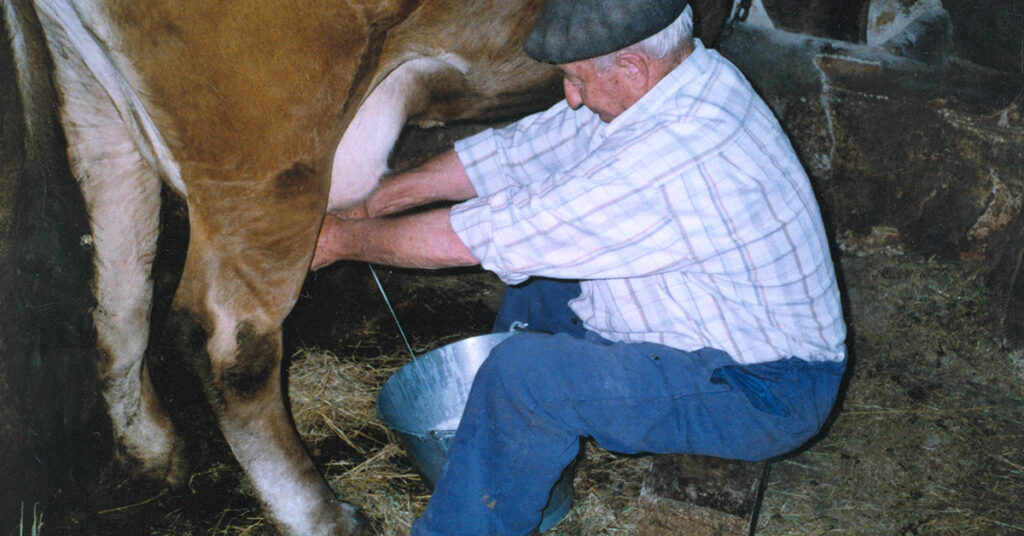Basque ethnography at a glance
Let us look at how cows were milked by hand, eskuz erastea, in the past. The barn needed to be a haven of peace and quiet to milk the cows. The bedding was mucked out and fodder was put in the manager so the cows stayed still.
Water was put in a bucket and the animal’s udders, erroak, were cleaned thoroughly. The milking stool, with three legs and a hole in the middle to move it easily, was then put in place.
The cows used to be milked directly into a zinc bucket, but given the risk of it turning over, they were then first milked into a pail or tank and the milk was then tipped into the bucket. In any event, when the cows were directly milked into the bucket – particularly when plastic buckets began to be widely used due to their lack of stability –, milkers had to hold the bucket tightly between their knees and feet.
The tail of the cow had to be tied to her back leg as a precaution to avoid the risk of her swatting the milker in the face and injuring their eye or tipping the milk on the floor. Sometime afterwards, they started to use an iron gimmick bought from the store to restrain the cows’ legs to their backs.
The milker sat on the right side of the cow looking backwards. When a bucket was used, the milker milked two teats at the same time, one with each hand, first the ones nearest the milker and then those further away. When a tank was used, the teats were milked one by one as the milker had to hold the recipient with their other hand.
A hard udder, erro gogorra, is better milked than a soft one, erro zimela. Once the milking has started, it should not be stopped until the teats harden. The udder should be rubbed so that it is stimulated for milking; the process should not be interrupted as there is the risk of the milk going off. Some cows are easy to milk and others difficult, zalak. Special care has to be taken with the cows that have been bred for the first time as their udders are more delicate, minberak, and ticklish; they can kick and even release the iron restraint.
Cows were milked twice a day, in the morning and at dusk. The milkers would wear special clothes as milking by hand is very messy and the garments smell.
One needs to be very skilful, eskua behar da, to milk well, as in any other trade. The people interviewed said that women are better at milking than men, perhaps because women generally have softer hands and the cow’s udders respond better.
Cows give most milk in the three months immediately after giving birth; production lowers slightly when the cows are on heat, susera, and even more when in calf. Cows are then milked once a day instead of twice, bateratu, and dry up, antzutu, in the sixth/seventh month of carrying the calf.
The arrival of milk machines made the work much easier. They were introduced in the Gernikaldea district at the end of the 1960s.
Segundo Oar-Arteta — Labayru Fundazioa


